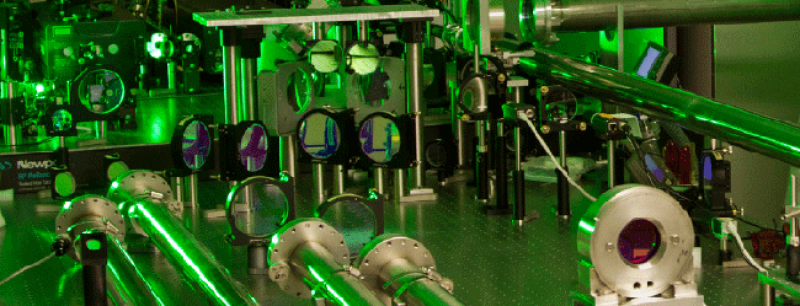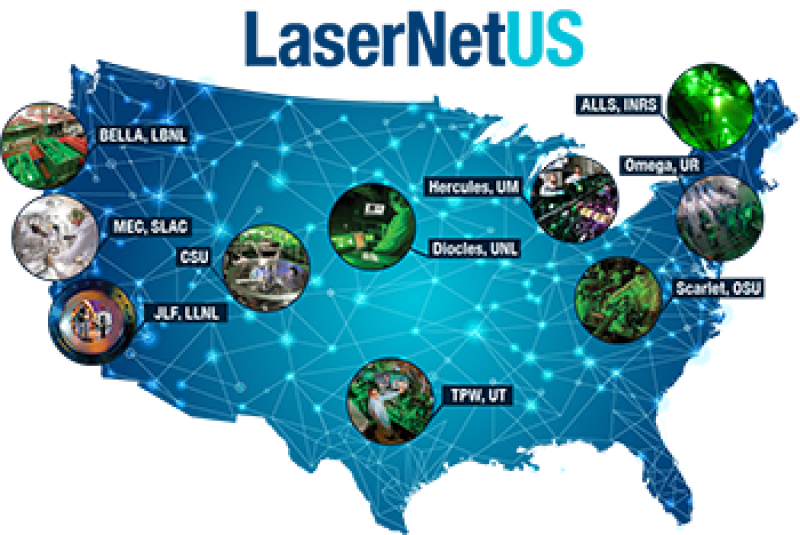LaserNetUS high-power laser consortium including Ohio State receives $18M from the Department of Energy


In 2018, the U.S. Department of Energy established a network of facilities operating ultra-powerful lasers, LaserNetUS. Organized and funded through the department’s Office of Fusion Energy Sciences (FES), the new network was created to provide vastly improved access to unique lasers for researchers and to help restore the U.S.'s once-dominant position in high-intensity laser research.
This fall, the Department of Energy recently awarded LaserNetUS $18 million in new funding distributed among 10 partner institutions and including $1 million for user support. The funding will continue and expand LaserNetUS operations for three years.

“LaserNetUS initiative is a shining example of a scientific community coming together to advance the frontiers of research, provide students and scientists with broad access to unique facilities and enabling technologies, and foster collaboration among researchers and networks from around the world”, said James Van Dam, associate director of the Office of Fusion Energy Sciences. “ We are very excited to work with all of these outstanding institutions as partners in this initiative.”
The initiative includes Ohio State, home of the Scarlet Laser Facility. Said Principal Investigator Douglass Schumacher, professor in the Department of Physics, “This is greatly increasing the range of experiments we can perform. Users are coming to us with new ideas and new technology to make it all work.”
LaserNetUS includes the most powerful lasers in the United States and Canada, some of which have powers approaching or exceeding a petawatt. Petawatt lasers generate light with at least a million billion watts of power, or nearly 100 times the combined output of all the world's power plants but compressed in the briefest of bursts. These lasers fire off ultrafast pulses of light shorter than a tenth of a trillionth of a second.
All facilities in LaserNetUS operate high-intensity lasers, which have a broad range of applications in basic research, advanced manufacturing and medicine. They can recreate some of the most extreme conditions in the universe, such as those found in supernova explosions and near black holes. They can generate particle beams for high-energy physics research or intense x-ray pulses to probe matter as it evolves on ultrafast time scales. They are being used to develop new technology, such as techniques to generate intense neutron bursts to evaluate aging aircraft components or implement advanced laser-based welding. Several LaserNetUS facilities also operate high-energy longer-pulse lasers that can produce exotic and extreme states of matter like those in planetary interiors or many-times-compressed materials; they can also be used to study the laser-plasma interaction, important to fusion energy programs.
In its first year of user operations, LaserNetUS awarded beamtime for 49 user experiments to researchers from 25 different institutions. Over 200 user scientists, including well over 100 students and postdocs, have participated in experiments so far. The LaserNetUS institutions are: Colorado State University, Lawrence Berkeley National Laboratory, Lawrence Livermore National Laboratory, SLAC National Laboratory, The Ohio State University, University of Michigan, University of Nebraska-Lincoln, Institut National de la Recherche Scientifique, University of Rochester and University of Texas at Austin. All proposals are peer reviewed by an independent external panel of national and international experts.
The U.S. has been a pioneer in high intensity laser technology and was home to the research that was recognized by the 2018 Nobel Prize in Physics. The network and future upgrades to LaserNetUS facilities will provide new opportunities for U.S. and international scientists in discovery science and in the development of new technologies.
